In Physics of Fluids, investigators from the University of Florida and Lebanese American University carried out detailed computer simulations to test a mathematical theory they developed previously. They found nearly identical exhalations could spread in different directions when miniscule initial variations are substantially amplified by turbulence. This is the so-called butterfly effect.
Tag: Droplets
Flushing a Public Toilet? Don’t Linger, Because Aerosolized Droplets Do
Because COVID-19 has been detected in urine and stool samples, public restrooms can be cause for concern. Researchers measured droplets generated from flushing a toilet and a urinal in a public restroom and found a substantial increase in the measured aerosol levels in the ambient environment with the total number of droplets generated in each flushing test ranging up to the tens of thousands. Due to their small size, these droplets can remain suspended for a long time.

Air Purifiers May Do More Harm Than Good in Confined Spaces with Airborne Viruses
The positions of air inlets and outlets in confined spaces, such as elevators, greatly affect airborne virus transmission. In Physics of Fluids, researchers show air purifiers may actually increase the spread. They use ultraviolet radiation to kill viruses and other microbes, but they also circulate air, sucking it in and exhausting cleaned air. This adds to overall circulation.
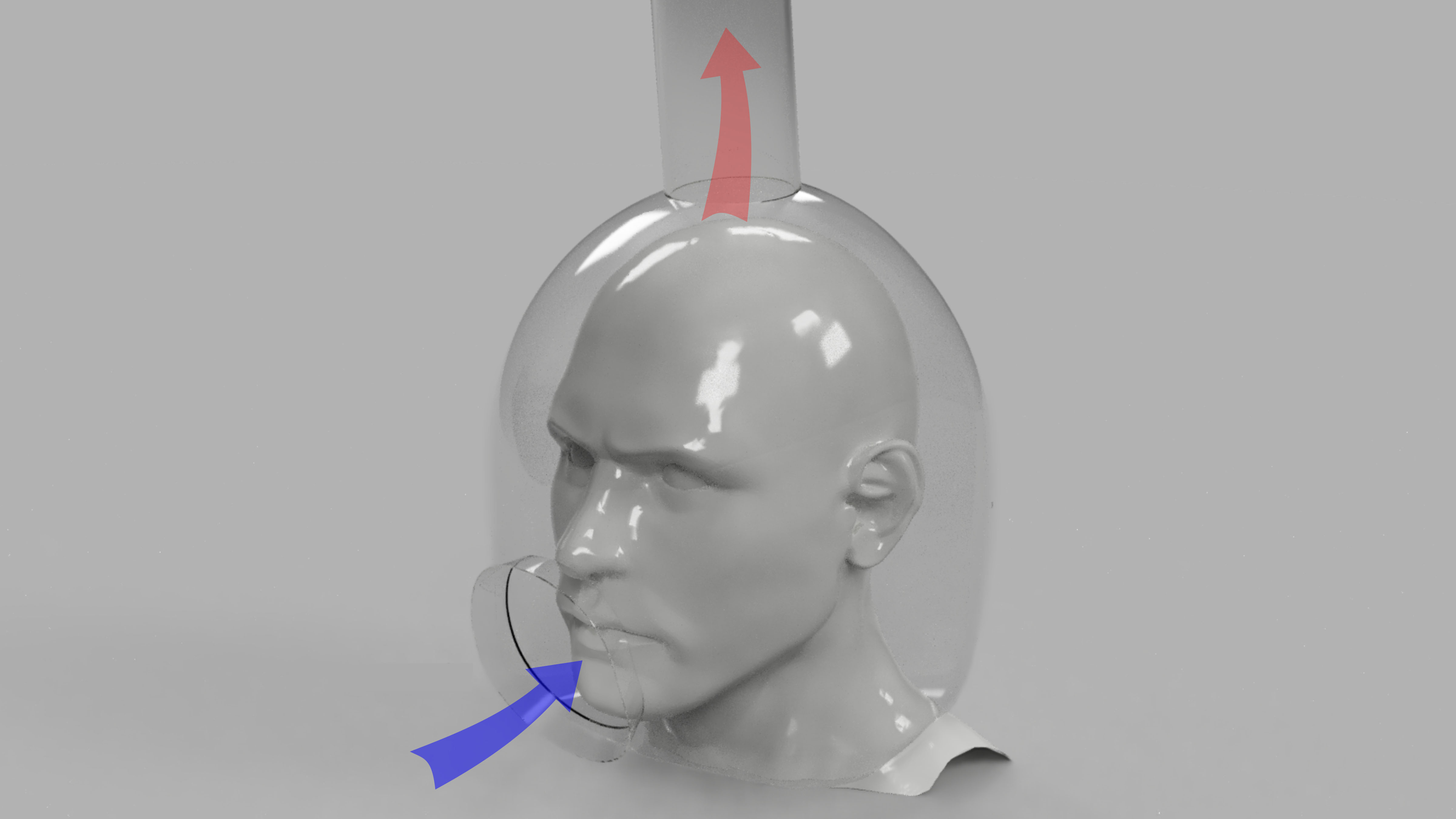
Disposable Helmet Retains Cough Droplets, Minimizes Transmission to Dentists, Otolaryngologists
Dentists and otolaryngologists are at particular risk of infection of COVID-19, since they need direct access to the mouth, nose, and throat of patients. The current solutions are expensive, not highly effective, and not very accessible. In Physics of Fluids, researchers discuss their design of an open-faced helmet for patient use that is connected to a medical-grade air filtration pump from the top that creates a reverse flow of air to prevent cough droplets from exiting the helmet.
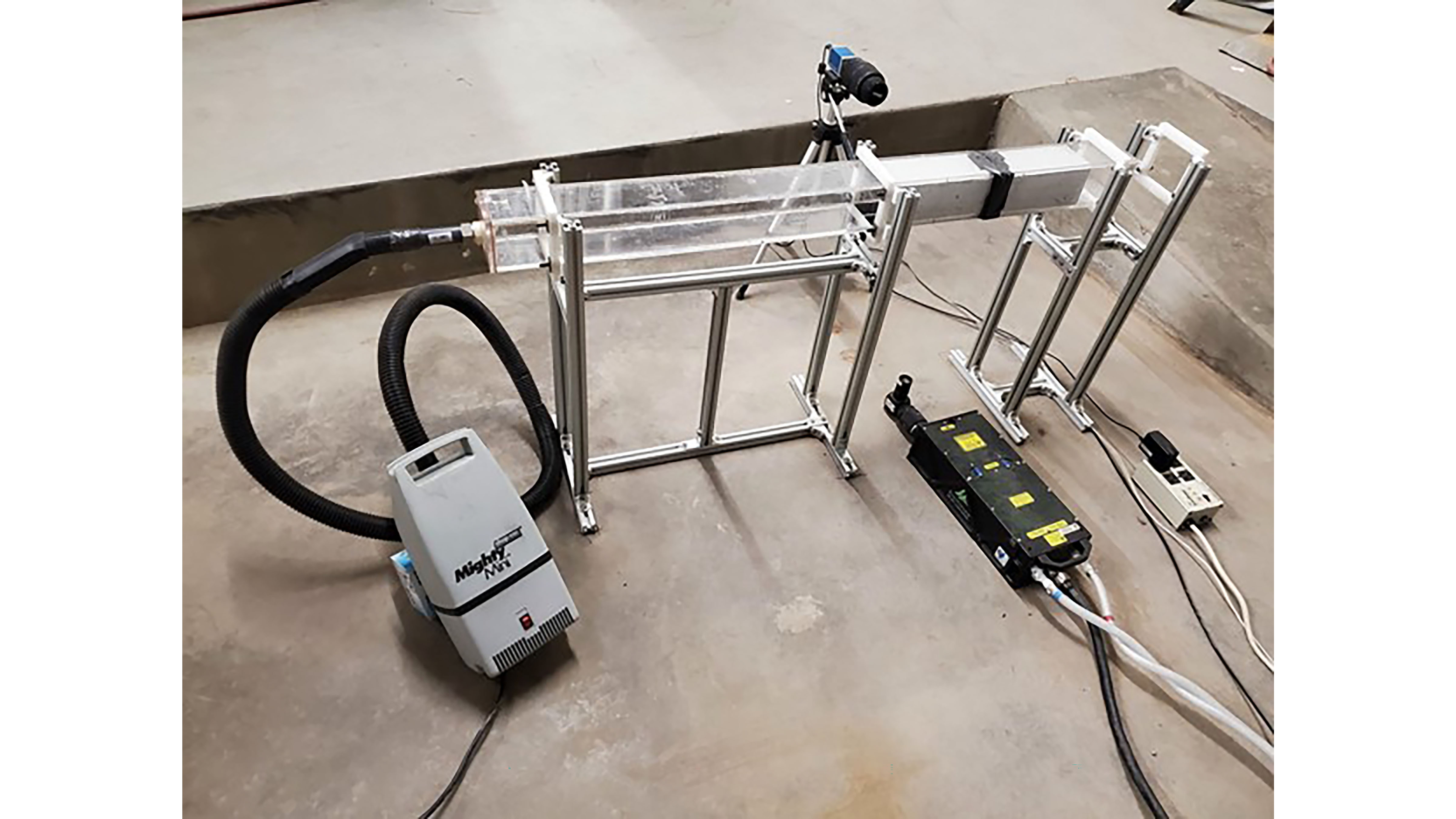
Masks Not Enough to Stop COVID-19’s Spread Without Distancing
Simply wearing a mask may not be enough to prevent the spread of COVID-19 without social distancing. In Physics of Fluids, researchers tested how different types of mask materials impacted the spread of droplets that carry the coronavirus when we cough or sneeze. Every material tested dramatically reduced the number of droplets that were spread. But at distances of less than 6 feet, enough droplets to potentially cause illness still made it through several of the materials.
Rutgers Expert Available to Discuss Coronavirus Risk from Surfaces, Groceries, Food, Airborne Exposures
New Brunswick, N.J. (Oct. 26, 2020) – Rutgers University–New Brunswick Professor Donald W. Schaffner is available for interviews on the likelihood of getting infected by the SARS-CoV-2 coronavirus via surfaces, groceries, eating food and airborne/aerosol transmission. “Current evidence still indicates that risk from surfaces remains…
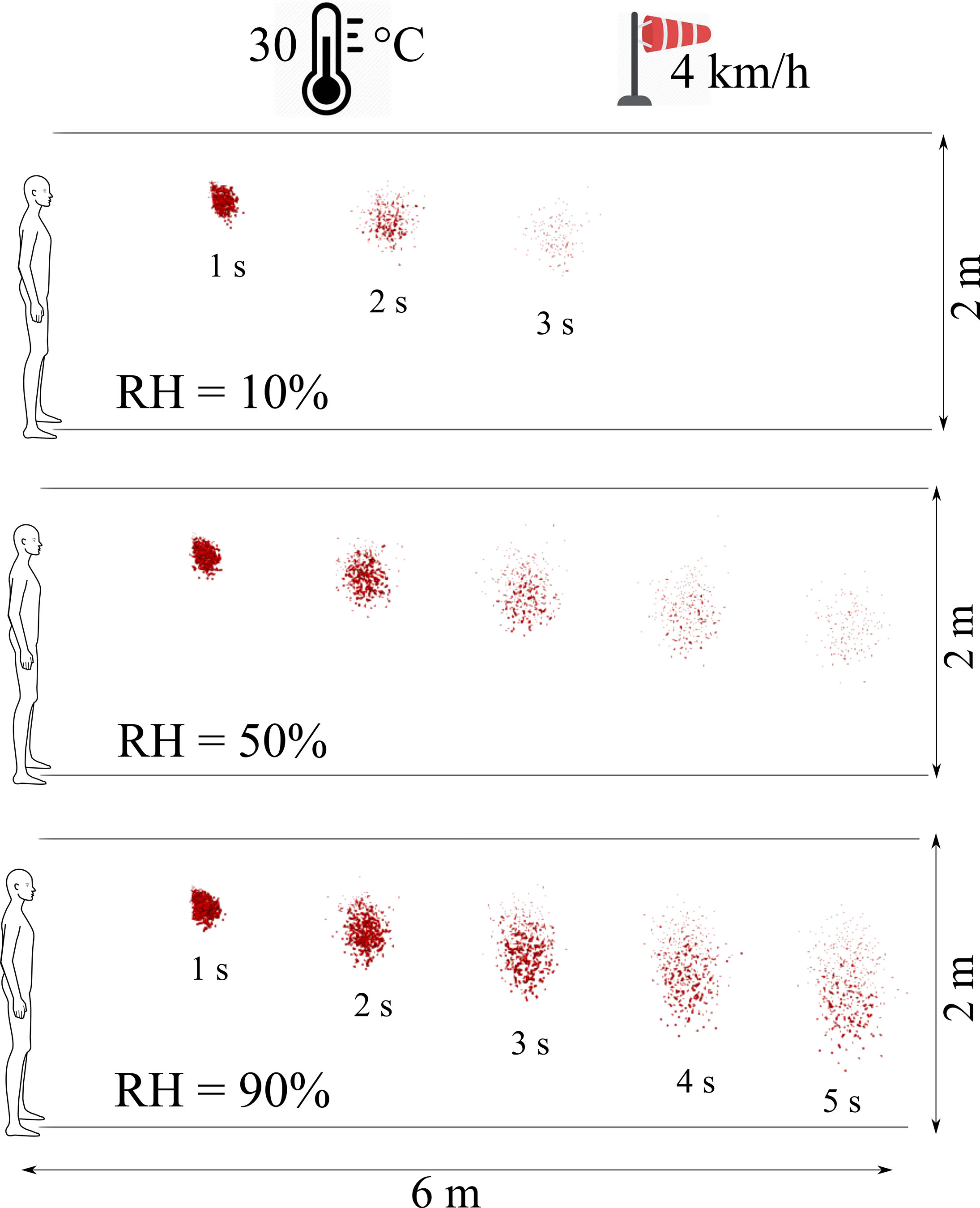
Evaporation Critical to Coronavirus Transmission as Weather Changes
As COVID-19 cases continue to rise, it is increasingly urgent to understand how climate impacts the spread of the coronavirus, particularly as winter virus infections are more common and the northern hemisphere will soon see cooler temperatures. In Physics of Fluids, researchers studied the effects of relative humidity, environmental temperature, and wind speed on the respiratory cloud and virus viability. They found a critical factor for the transmission of the infectious particles is evaporation.
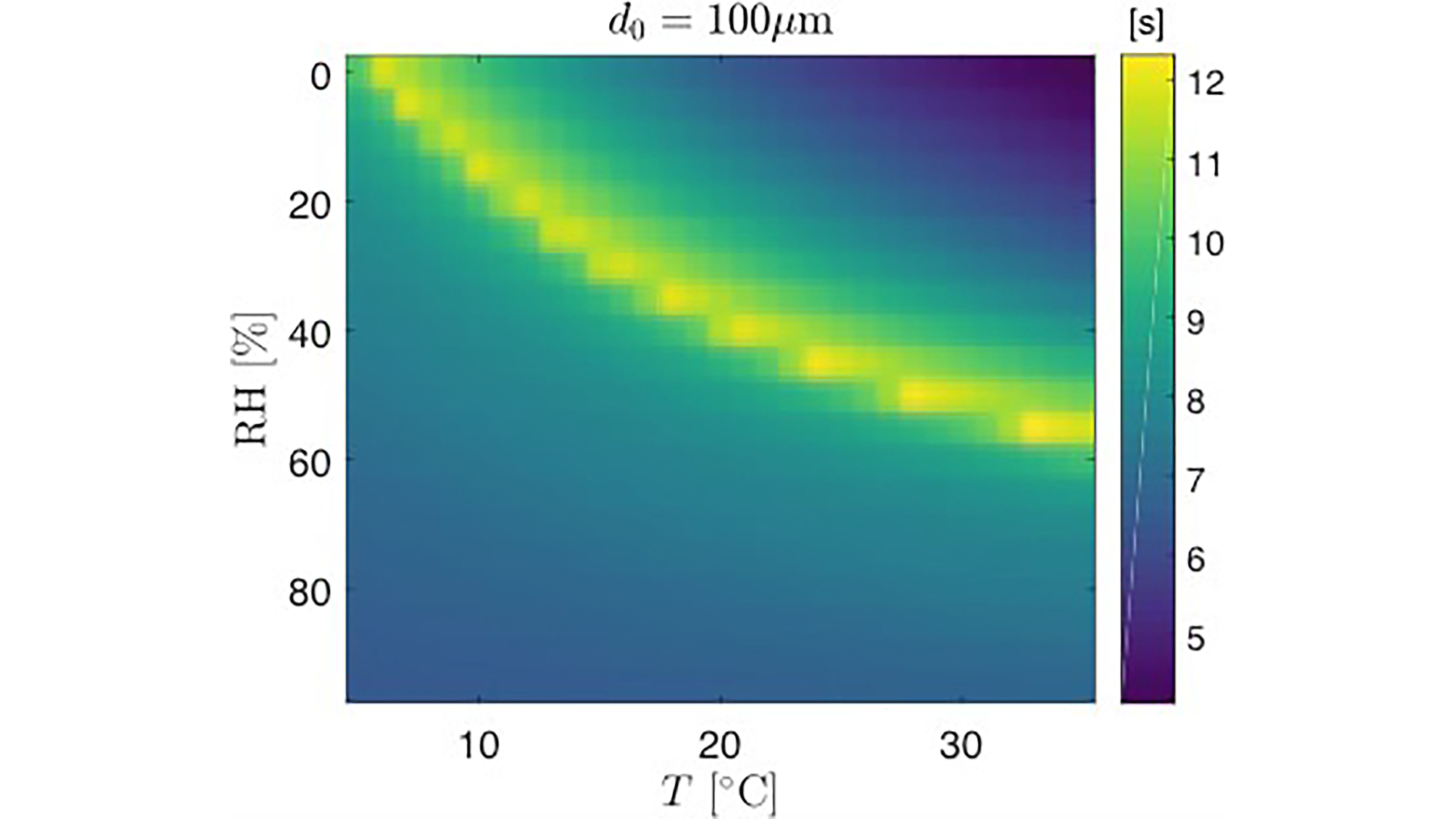
Humid Air Can Extend Lifetime of Virus-Laden Aerosol Droplets
The novel coronavirus that causes COVID-19 is thought to spread through natural respiratory activities, but little is known about how the virus is transported through the air. Scientists report in Physics of Fluids on a study of how airflow and fluid flow affect exhaled droplets that can contain the virus. Their model includes a more accurate description of air turbulence that affects an exhaled droplet’s trajectory. Calculations with their model reveal, among other things, an important and surprising effect of humid air.

Face Mask Construction, Materials Matter for Containing Coughing, Sneezing Droplets
While the use of face masks in public has been widely recommended by health officials during the current COVID-19 pandemic, there are relatively few specific guidelines pertaining to mask materials and designs. A study in Physics of Fluids looks to better understand which types are best for controlling respiratory droplets that could contain viruses. The team experimented with different choices in material and design to determine how well face masks block droplets as they exit the mouth.

Seeing is Believing: Effectiveness of Facemasks
Using flow visualization of emulated coughs and sneezes, researchers assessed the efficacy of facemasks in obstructing droplets. Loosely folded facemasks and bandana-style coverings provide minimal stopping-capability for the smallest aerosolized respiratory droplets. Well-fitted homemade masks with multiple layers of quilting fabric, and off-the-shelf cone style masks, proved to be the most effective in reducing droplet dispersal. Importantly, uncovered coughs were able to travel noticeably farther than the currently recommended 6-foot distancing guideline. Without a mask, droplets traveled more than 8 feet.
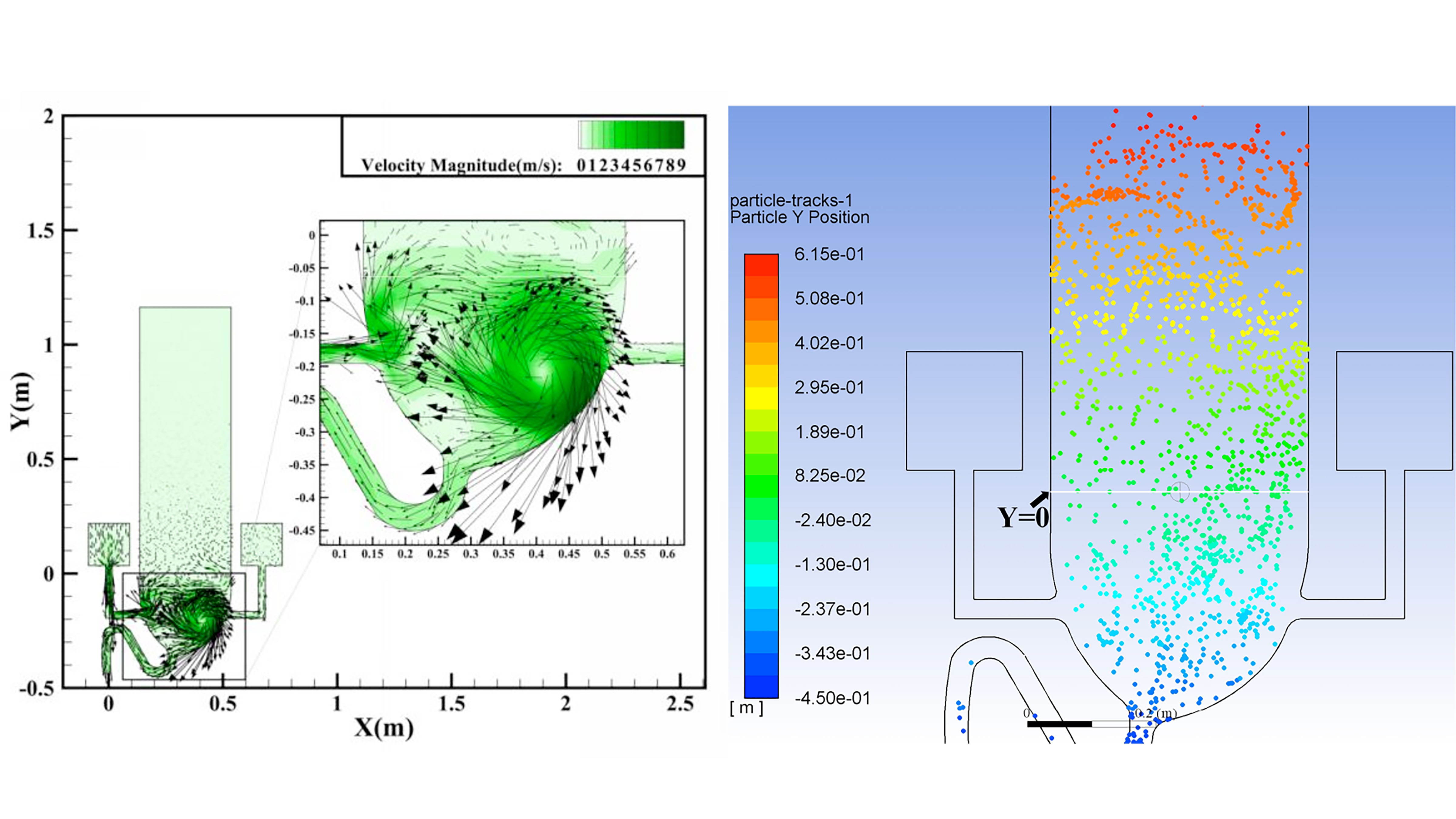
Flushing Toilets Create Clouds of Virus-Containing Particles
Researchers used a computer simulation to show how a flushing toilet can create a cloud of virus-containing aerosol droplets that is large and widespread and lasts long enough that the droplets could be breathed in by others. With recent studies showing the COVID-19 virus can survive in the human digestive tract and show up in feces of the infected, this raises the possibility the disease could be transmitted with the use of toilets.

Survival of Coronavirus in Different Cities, on Different Surfaces
One of the many questions researchers have about the COVID-19 virus is how long it remains alive after someone infected coughs or sneezes. In Physics of Fluids, researchers examine the drying time of respiratory droplets from COVID-19-infected subjects on various surfaces in six cities around the world. Using a model well established in the field of interface science, the drying time calculations showed ambient temperature, type of surface and relative humidity play critical roles.
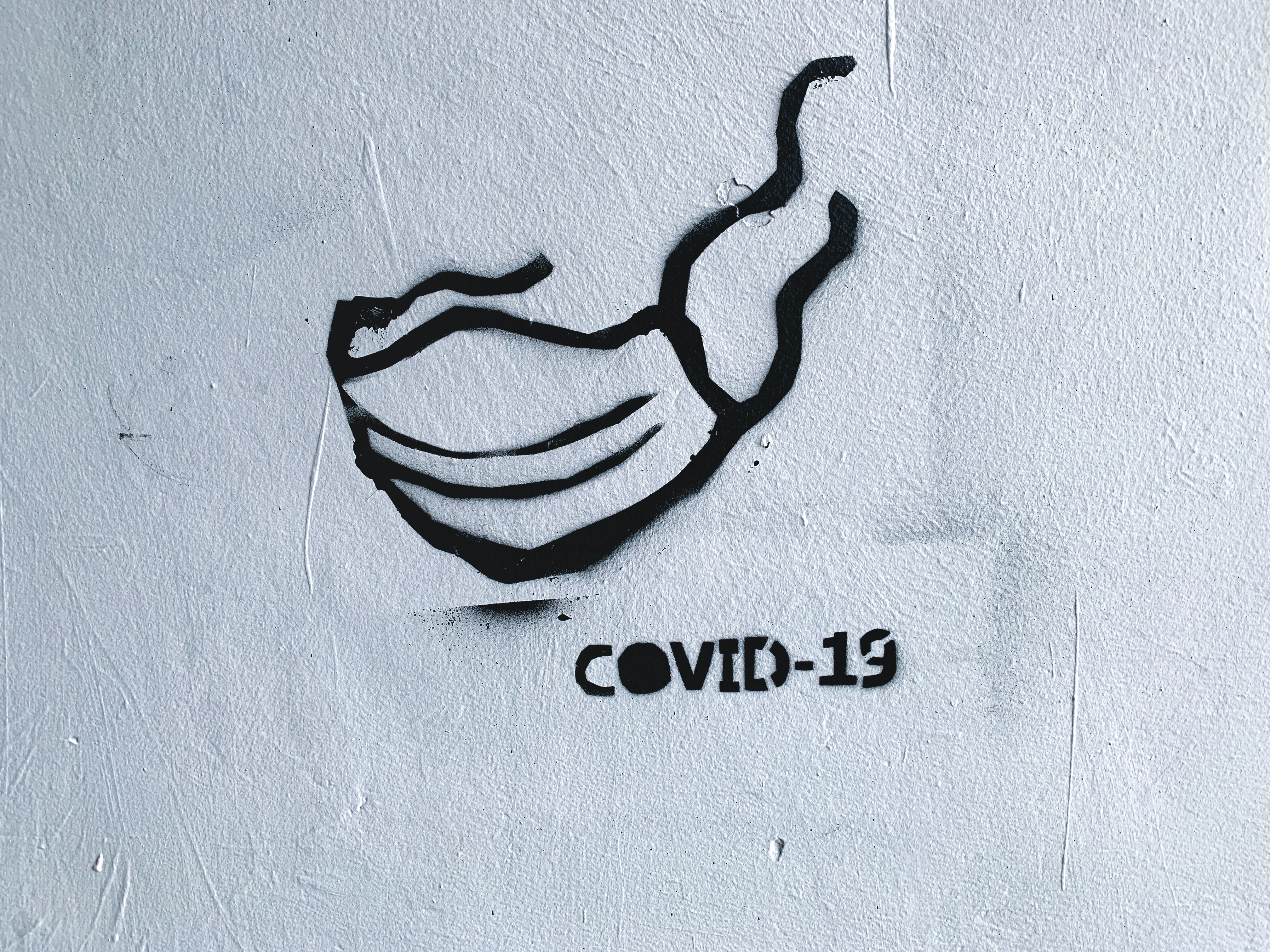
The Case For DIY Masks To Slow Coronavirus’ Spread
A small cluster physicist explains why DIY masks work and why even a bandana is better than nothing to fight the spread of COVID19.